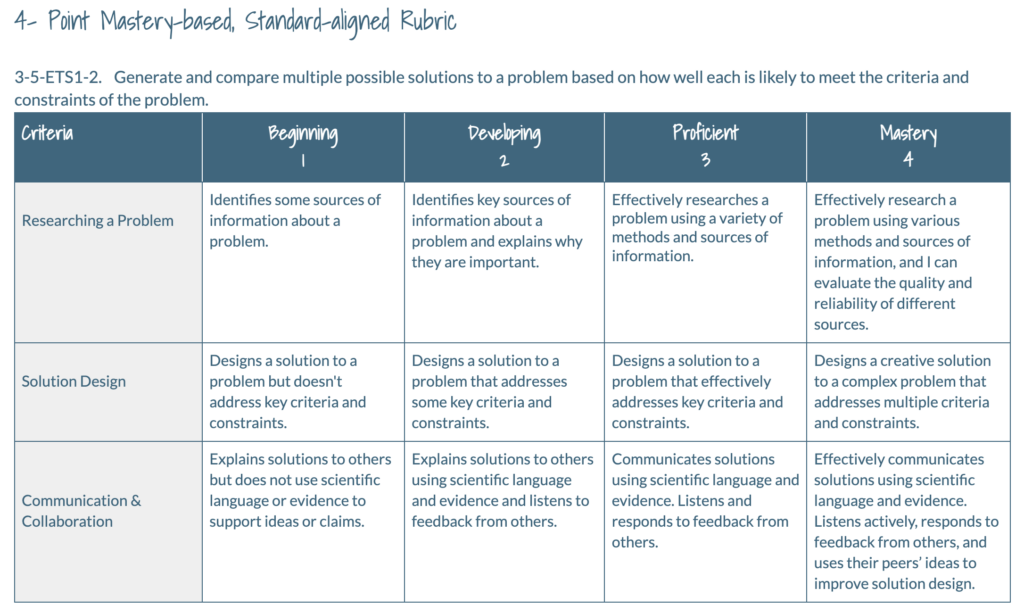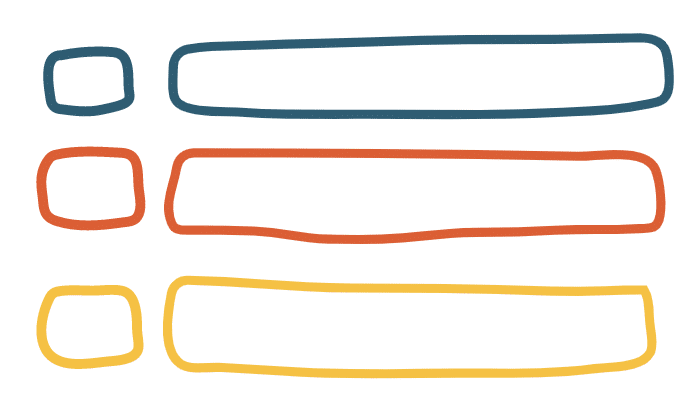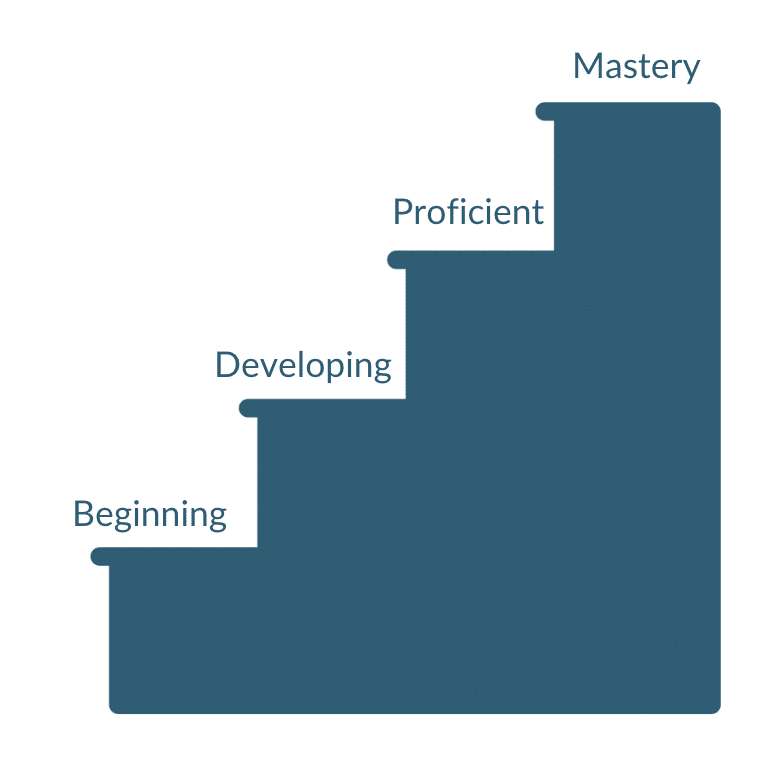Why should teachers use rubrics to assess student work?
Rubrics are valuable assessment tools that provide clear and transparent expectations about what constitutes quality work. Rubrics identify specific criteria relevant to the assignment, along with corresponding levels of performance that allow for more precise grading. Using rubrics helps teachers stay focused during the grading process and ensures that grading is objective, consistent, and fair.
How does using rubrics benefit students?
When teachers provide students with the rubric at the start of any assignment or task that will be assessed, the rubric serves as a roadmap. It helps students understand what is expected and how they will be evaluated.
Clear expectations positively impact the students’ feelings of competence or confidence in their ability to complete a task, which can motivate them to put in their best effort. Rubrics also provide students with feedback, helping them understand their strengths and areas where they need to improve. The consistent use of rubrics can help to promote higher levels of self-awareness, a culture of learning and growth, and ensure that assessments are accurate, transparent, and meaningful.
Finally, a rubric helps to mitigate the perception of subjectivity in grading by emphasizing the objective criteria that are being assessed in a student’s work. Rather than relying on a teacher’s subjective feelings, the rubric provides clear and specific guidance for what is expected and valued in the assignment. This helps to shift the focus away from the teacher-student relationship and towards the quality of the student’s work, promoting a more objective and fair grading process.
How should teachers approach the design of a rubric?
Step 1: Align Rubric Criteria with Grade Level Standards and Learning Objectives
When teachers design a unit or learning cycle, they should anchor that work in grade-level content standards and articulate clear learning objectives. What should students know, understand, and be able to do at the end of that unit or learning cycle? Answering those questions creates clarity about what teachers and students are working toward, making it easier to design a rubric to measure progress toward those learning objectives.
Teachers will want to align the criteria on their rubrics with those learning objectives. This alignment ensures that the assessments measure what they intend to measure and accurately reflect student learning in relation to specific standards.
Let’s look at some examples of content standards and the rubric criteria teachers might use to assess them.
Next Generation Science Standard Grades 3-5 ETS1-2 Engineering Design
ETS1.B: Developing Possible Solutions
Research on a problem should be carried out before beginning to design a solution. Testing a solution involves investigating how well it performs under a range of likely conditions.
At whatever stage, communicating with peers about proposed solutions is an important part of the design process, and shared ideas can lead to improved designs.
Rubric Criteria
Research on a problem
Solution design
Communication and collaboration
California English Language Arts Writing Standards Grade 7
Write arguments to support claims with clear
reasons and relevant evidence.
a. Introduce claim(s), acknowledge and address
alternate or opposing claims, and organize
the reasons and evidence logically. CA
b. Support claim(s) or counterarguments with
logical reasoning and relevant evidence, using
accurate, credible sources and demonstrating
an understanding of the topic or text. CA
c. Use words, phrases, and clauses to create
cohesion and clarify the relationships among
claim(s), reasons, and evidence.
Rubric Criteria
Clear claim with reasons
Evidence
Explanation and analysis
California History-Social Science Framework for Grades 9-12
Students evaluate major debates among historians concerning alternative interpretations of the past, including an analysis of authors’ use of evidence and the distinctions between sound generalizations and misleading oversimplifications.
Rubric Criteria
Analysis and evaluation of historical interpretations
Step 2: Limit Your Criteria
Teachers must limit the number of criteria they assess when using a rubric. If there are too many criteria, students may become overwhelmed and struggle to focus on the most important aspects of the assignment or task. This can lead to a lack of clarity and focus and negatively impact the quality of their work.
When teachers include too many criteria in a rubric, they may unintentionally assess skills or knowledge they do not spend significant time helping students master. This can result in students feeling frustrated and confused about what is expected of them and may lead to a misalignment between the curriculum and the assessment. For example, a teacher assessing the California English Language Arts argumentative writing standard for grade 7 may want to start the year focused on teaching the structure of argumentative writing and focus their rubric on claim, evidence, and explanation since that is what they will focus on at the start of the year. Once students have mastered the basic structure, teachers may expand their focus to include elements like style, tone, transitions, and conclusion. At that point, they will want to focus on assessing those criteria instead.
Teachers do not need to assess every part of every assignment. By grading less we may actually give our students and ourselves more.
Catlin Tucker
Finally, including a large number of criteria in a rubric can be time-consuming for the teacher to grade and may lead to a lack of consistency in how the rubric is applied across different assignments. By limiting the number of criteria to the essential elements, teachers can provide clear guidance to students on what is expected and ensure that their assessments are focused, efficient, and aligned with their instructional goals.
Step 3: Use a mastery-based scale and describe each criterion at each level of mastery in student-friendly language.
Using a 4-point mastery-based scale for a rubric has several benefits. First, it provides students with a clear understanding of the specific criteria they must meet to demonstrate mastery of a particular standard. This helps them to focus their efforts on the skills and knowledge that are most important.
Second, it allows teachers to provide more targeted feedback to students based on their performance on each criterion. Instead of writing extensive notes on a finished product, teachers can circle or highlight language on the rubric that communicates why students earned a particular score. This feedback can help students improve their skills and knowledge over time.
Third, it can help promote a growth mindset by emphasizing that students can continue to improve their mastery of a particular standard through effort and practice.
Let’s look closer at the Next Generation Science Standard ETS1-2 Engineering Design for grades 3-5. Below is an example of how a teacher can use a 4-point mastery-based, standard-aligned rubric to assess the criteria associated with that standard.

Using a rubric to assess student work benefits both students and teachers. By providing a limited number of clear standards-aligned criteria, students can better understand what is expected of them and focus on specific areas for improvement. A mastery-based scale reinforces a growth mindset and provides students with a roadmap they can use to develop and improve. Additionally, providing clear, student-friendly descriptions at each level of mastery can help students self-assess and take ownership of their learning.
While creating a rubric does take time, it will ultimately save teachers time in the grading process. Teachers do not need to write lengthy comments on student work to justify a grade. They can instead circle or highlight language on the rubric that serves as feedback and provides clarity about the score students are receiving. Overall, using a rubric promotes consistency, fairness, and transparency in the assessment process.







6 Responses
When do you recommend this type of rubric over the single-point rubric?
Hi Kerri,
I encourage my graduate students to use single-skill rubrics for formative assessments or smaller-scope assignments. Then 2-3 skill/criteria rubrics for more complex summative assessments when they need to assess multiple skills.
Take care.
Catlin
The biggest pain in rubrics is making them! I still default to Rubistar and it’s old as heck! What better alternatives are there?
YES! If you have not explored ChatGPT for rubric building, I’d suggest you check it out. You can ask it to generate a four point, mastery-based rubric for any criteria. It can even help you to identify criteria. The blog below talks about using ChatGPT for rubric design. I hope it’s helpful.
https://catlintucker.com/2023/02/teaching-writing-in-harmony-with-ai
Take care.
Catlin
I think that Kerri’s question was about not single-skill rubrics, but single-point rubrics, which typically only show the mastery criteria.
https://www.cultofpedagogy.com/single-point-rubric/ has some thoughts on the subject.
Thanks for sharing this resource, Bryan! I’ve typically used this style of rubric for formative feedback as opposed to summative assessments. Love the simplicity of a single-point rubric.
Take care.
Catlin